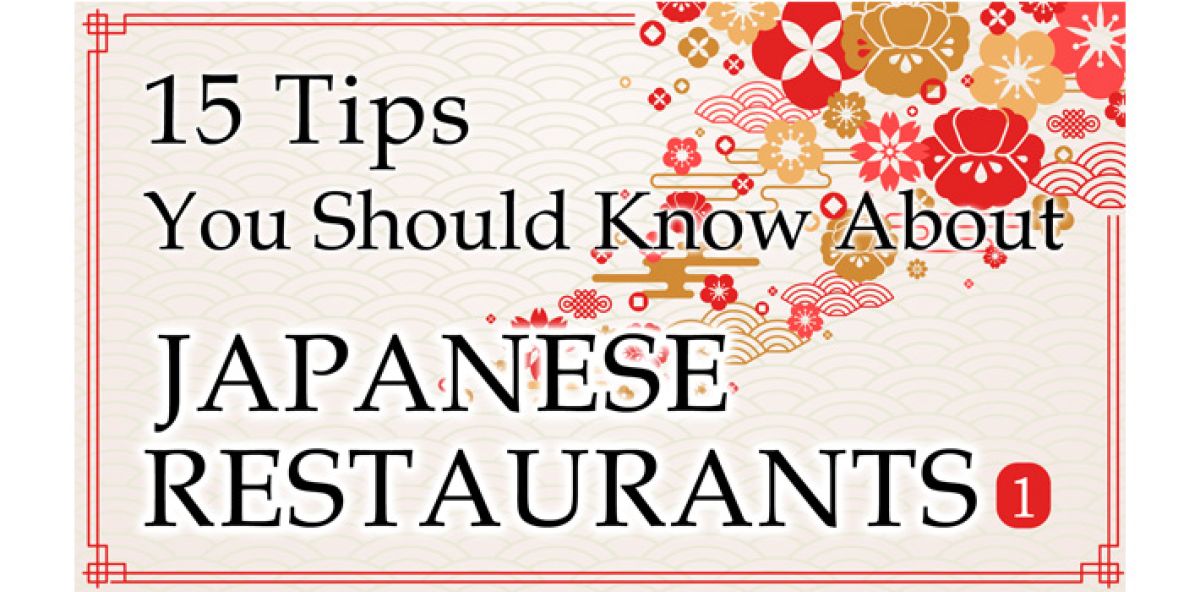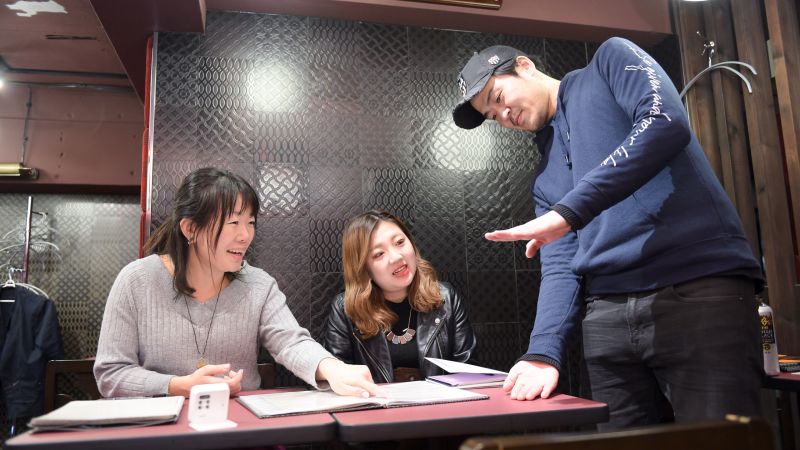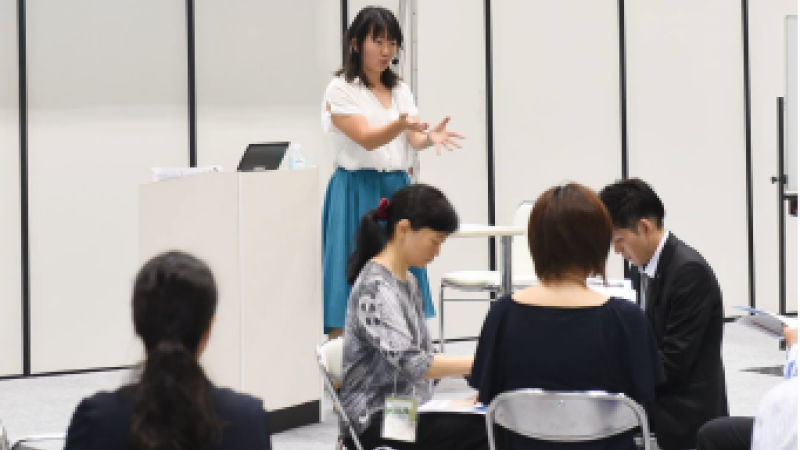-
2021年2月24日
15 Tips you Should Know about JAPANESE RESTAURANTS Part. 1

15 Tips you Should Know about
JAPANESE RESTAURANTS Part. 1
Hi, my name is Miki. I’m a Japanese restaurant inbound specialist, and a writer.
I have interviewed more than 1,600 people who have been to Japan about Japanese restaurants’ hospitality. Then, I found out that due to the culture differences, there are many misunderstandings between Japanese restaurants and the tourists. For example, the people from other countries said “I wanted to order more, but I couldn’t”, and the Japanese restaurants said, “They came in but left without ordering at all.” It’s a shame for those who came all the way to Japan and was so ready to eat lots of delicious food, and for the restaurants, too. So, in this video, I would like to show you in which part the tourists got confused, and how to solve the problems based on more than 1,600 people’s feedbacks.
1. A restaurant is not easy to find
People often say “Japanese restaurants are hard to find.” This is because small buildings are densely packed in Japanese cities, and restaurants are not always on the 1st floor like Western countries. They may be on the 3rd, or basement floor. Also, I sometimes get into a situation where a restaurant’s sign faces a main street, but its entrance faces a back street. Even we Japanese often get confused and lost.
Solution 1: Google the store on the 1st floor beforehand
You can see the outside of the building that you want to go on Google My Business and Tripadvisor. How to find the building is not by the name of the building, but what store is on the 1st floor. Is the 1st floor Seven Eleven, a bank, or a flower store? If you know it beforehand, the building will be easy to find.
Solution 2: Google the floor beforehand
If you google, you can see what floor the restaurant you want to go is on. Find not only the address and phone number, but also the floor. By the way, how to read the floor is the same as the States, so 1F is on the first floor, 2F is on the 2nd floor, and B1F is the 1st basement floor.
2. Lack of employees
We don’t have hostesses and hosts in Japanese restaurants. An employee who notices new guests will take them to a table. But, restaurant industry is always lacking people. So, it may often happen that they won’t notice that you are at the entrance and waiting, or even though they have noticed you, they are too busy to welcome you.
Solution: call out “Sumimasen!”
You should wait for a while, but if they still won’t come to you, you can call out “Sumimasen!”, which means “Excuse me.” It’s “SU MI MA SE N”. Calling out to food servers like that is definitely not good idea in Western countries, but in Japan, it’s OK and everyone does that. You are not used to it and it may make you feel uncomfortable, but just think this is Japanese culture. Welcome to Japan!
3. There are many smoking restaurants
One of the most shocking things about Japanese restaurants for the tourists is, we still have many smoking restaurants in Japan. The number is decreasing little by little, but we still can smoke in small restaurants and restaurants where they provide alcohols like bars, izakayas, and clubs.
Solution 1: Google beforehand
If you don’t want to go in to a smoking restaurant, or you are not sure the restaurant you want to go is smoking or not, you better google. If you check “Tabelog” which is Japanese original restaurant website, it specifies if the restaurant is smoking or not.
Solution 2. find stickers
If you can’t find it on the Internet, it may have stickers at the entrance. But unfortunately, not even half of restaurants have these kind of stickers yet.
Solution 3. ask the employee
If you can’t find it on the Internet, or at the entrance, go inside the restaurant and ask the employee. Not many people speak English, but they will mostly understand if you ask “Smoking here?” with a smoking gesture. The employee will say “Yes” if they have smoking tables or smoking area, and “No” if they don’t.
4. Not many restaurants have English menus, especially in coutryside
Many restaurants which are in a big city but not franchised, or restaurants in countryside still don’t have English menus yet. You may be able to order if there are pictures on the menus, but some restaurants don’t even have photos.
Solution: Use Google Translate
If you are in that situation, Google translate can be your Superman. It’s a free app. When you aim your camera at the menu you want to read, it can show you all in English. In Japan, English city signs or menus are not wide-spread. So I strongly recommend you to download it before you come to Japan.
5. Many food servers are part timers and so they might not be able to explain the dishes
Some of you must think “If I have hard time reading Japanese menu, why don’t I call a food server”. However, like I mentioned the earlier, Japanese restaurant industry is always lacking employees, and many food servers are part-timers. Some of them work at a restaurant only on that day, which means, a daily part-timer. So, even if you ask them “What is this dish?” or “What’s in it?”, most of them can’t answer it immediately.
Solution: Enjoy something you don’t know
It s an exception if you have a food allergy, or you are vegetarian, or you can’t eat certain ingredient due to a religion, but if you can eat anything, don’t think about it deeply and try to order like “I’m not sure what it is, but it looks good so let’s order it”. You came to a country which has different language and culture from yours. So please enjoy the “unknown” and “challenge” which you can’t experience when you are back home.
6. You have to call a food server each time vol. 1
In Western countries, you have your food server and he/she will come and take your order, so you don’t have to call them each time. But in Japan, you have to call a food server. Some people whom I interviewed didn’t know that culture differences and just waited for a food server to come, but finally left the restaurant because noone came to take their orders. It’s a shame that they entered the restaurant but left without ordering anything.
Solution: call out “Sumimasen!”
When you want to order in a Japanese restaurant, there are 3 ways to do this.
- 1. Order with the tablet
- 2. Press the call button on your table
- 3. Call out “Sumimasen”
In a restaurant without tablets or call buttons, you have to call out to the employees. Otherwise, they won’t come to you. If you call out to them but they are still busy, just try again. Don’t worry, calling out to food servers is not rude in Japan.
7. English level is low, but they can understand if you speak slowly
Japan is the 3rd largest world economy, but we have learned English grammer mainly at schools, so not many people including young people can speak English. But many of them wish to speak and communicate in English with you.
Japanese people are basically shy, so they may not come and talk to you, but if you start talking with them, they will make efforts to communicate with you using gestures and as many English words as they know.
Solution: Speak slowly and simply
When you talk with Japanese food servers, please don’t forget to speak slowly and simply. Don’t say “Could we have 2 more small plates, please?” but just simply say “2 small plates, please”. You can delete “Could we have” or “May I get”. Perhaps, most of questions and demands can be established by using “please” and “OK?” Also, don’t forget to use gestures. If you do that, you might hit it off and they’ll be more friendly to you.
8. Not many people know about “vegetarian”, “vegan”, “gluten-free”, and “Muslim”
Even though McDonald and Burger King have vegetarian menus in Western countries, we don’t have in Japan yet. Generally speaking, “vegetarian” or “vegan” are not well-known, even people working in the food industry are not sure what these are. And, some food servers know the word “Muslim”, but they don’t know what the Muslim can’t eat, or they have heard of “gluten-free”, but they have no idea what it is specifically.
Solution: Show an image
So, if you have a certain ingredient that you can’t eat, show that image to the food servers. And tell them “I can’t eat this.” slowly with gestures. Then, they might tell you which dish you can or you can’t eat.





